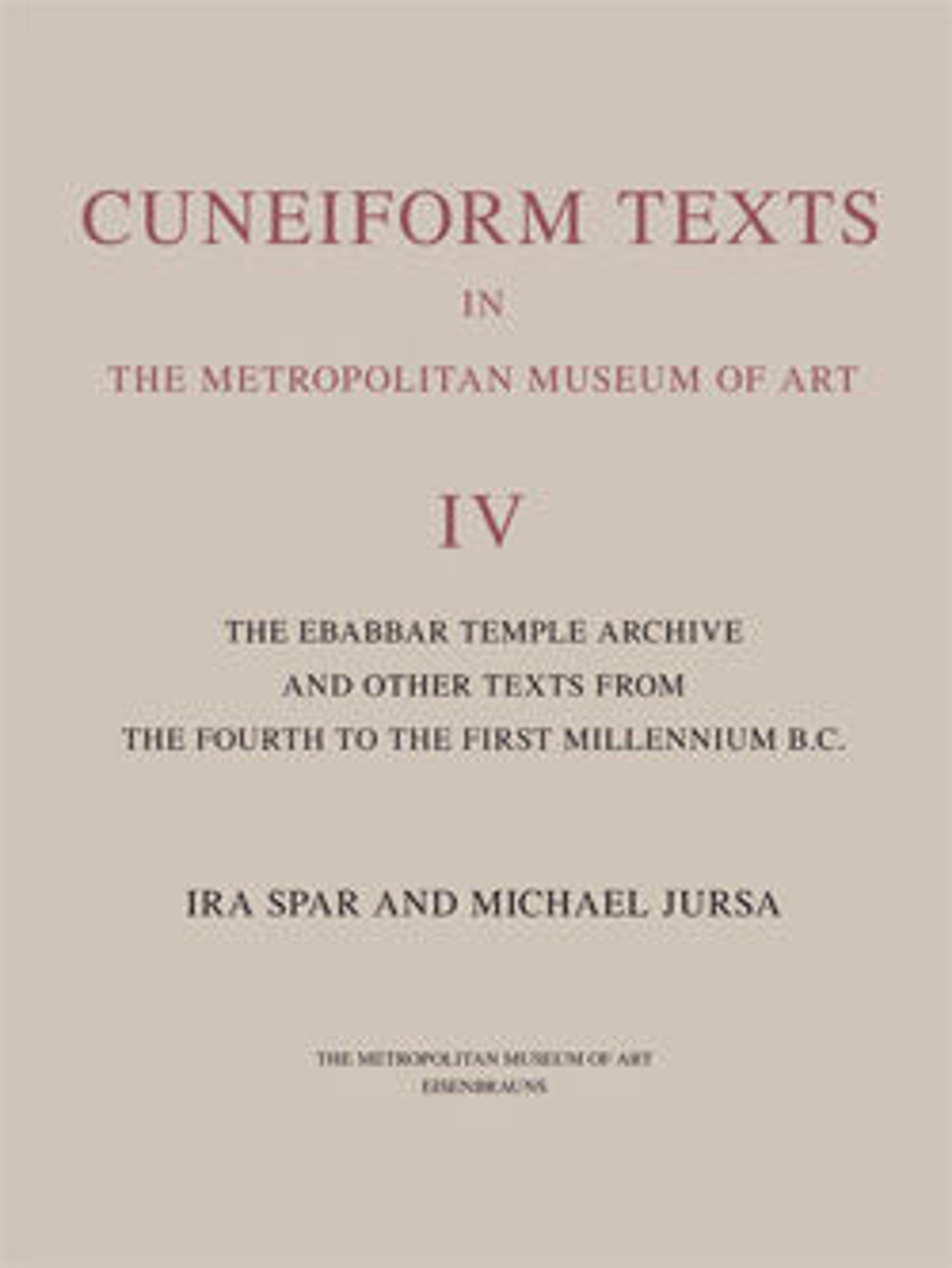Cuneiform tablet impressed with seals: administrative document inscribed in Achaemenid Elamite
This tongue-shaped clay tablet is round on one side and straight on the other. An Elamite cuneiform text covers much of the surface; impressions of cylinder seals appear on the reverse and flat sides of the tablet. The impression on the reverse shows a hero holding a winged lion creature on either side of him by its hind leg. The impression on the flat side is difficult to make out, but may show a bearded man with long hair.
The Elamite text reads:
60 rams, 75 ewes, 20 intermediate (yearling) ewes, 25 male lambs, 25 female lambs:
altogether 205 head of small livestock, alive
(as/for[?]) allocation by Hinduš
balance of the 21st year.
This tablet was excavated at Qasr-i Abu Nasr, an archaeological site at Shiraz, Iran in 1935. In form, shape, and language, it closely resembles the tablets of the Persepolis Fortification Archive, a vast archive of over 15,000 tablets discovered at Persepolis in 1933 and dating to the years 509 to 493 B.C. The archive was created by a bureaucratic agency at Persepolis responsible primarily for the disbursement of foodstuffs and agricultural products to everyone from the royal family to gangs of laborers in a large area of what is today Fars Province in Iran. When food or drink was issued, the supplier generally applied his seal to the left edge of a tablet, and the recipient applied his seal to the reverse or another surface. The details of the transaction were then recorded and the tablet was sent to Persepolis for processing by accountants.
One of the places mentioned in the archive, Tirrazish, may in fact refer to Shiraz. Thus it is possible that this tablet records a transaction that took place there, but for some reason the tablet was never sent to Persepolis for processing. However, excavations by the Metropolitan Museum of Art from 1932 to 1935 revealed a town of Sasanian (3rd to 7th centuries A.D.) and Islamic date (especially the 9th to 14th centuries A.D.) at Qasr-i Abu Nasr, not an Achaemenid one. Indeed, the Achaemenid (ca. 6th-4th centuries B.C.) material there seems not to have been original to the site. So it is also possible that when the excavations were winding down in 1935, workmen at Qasr-i Abu Nasr planted a tablet from Persepolis in the hopes of getting a few more seasons of work. If so, the plan failed, since the Met’s Persian Expedition moved on to Nishapur.
The Elamite text reads:
60 rams, 75 ewes, 20 intermediate (yearling) ewes, 25 male lambs, 25 female lambs:
altogether 205 head of small livestock, alive
(as/for[?]) allocation by Hinduš
balance of the 21st year.
This tablet was excavated at Qasr-i Abu Nasr, an archaeological site at Shiraz, Iran in 1935. In form, shape, and language, it closely resembles the tablets of the Persepolis Fortification Archive, a vast archive of over 15,000 tablets discovered at Persepolis in 1933 and dating to the years 509 to 493 B.C. The archive was created by a bureaucratic agency at Persepolis responsible primarily for the disbursement of foodstuffs and agricultural products to everyone from the royal family to gangs of laborers in a large area of what is today Fars Province in Iran. When food or drink was issued, the supplier generally applied his seal to the left edge of a tablet, and the recipient applied his seal to the reverse or another surface. The details of the transaction were then recorded and the tablet was sent to Persepolis for processing by accountants.
One of the places mentioned in the archive, Tirrazish, may in fact refer to Shiraz. Thus it is possible that this tablet records a transaction that took place there, but for some reason the tablet was never sent to Persepolis for processing. However, excavations by the Metropolitan Museum of Art from 1932 to 1935 revealed a town of Sasanian (3rd to 7th centuries A.D.) and Islamic date (especially the 9th to 14th centuries A.D.) at Qasr-i Abu Nasr, not an Achaemenid one. Indeed, the Achaemenid (ca. 6th-4th centuries B.C.) material there seems not to have been original to the site. So it is also possible that when the excavations were winding down in 1935, workmen at Qasr-i Abu Nasr planted a tablet from Persepolis in the hopes of getting a few more seasons of work. If so, the plan failed, since the Met’s Persian Expedition moved on to Nishapur.
Artwork Details
- Title:Cuneiform tablet impressed with seals: administrative document inscribed in Achaemenid Elamite
- Period:Achaemenid
- Date:ca. 500 BCE
- Geography:Iran, Qasr-i Abu Nasr
- Culture:Achaemenid
- Medium:Clay
- Dimensions:1 5/16 × 1 × 11/16 in. (3.4 × 2.6 × 1.7 cm)
- Credit Line:Rogers Fund, 1936
- Object Number:36.30.62
- Curatorial Department: Ancient West Asian Art
More Artwork
Research Resources
The Met provides unparalleled resources for research and welcomes an international community of students and scholars. The Met's Open Access API is where creators and researchers can connect to the The Met collection. Open Access data and public domain images are available for unrestricted commercial and noncommercial use without permission or fee.
To request images under copyright and other restrictions, please use this Image Request form.
Feedback
We continue to research and examine historical and cultural context for objects in The Met collection. If you have comments or questions about this object record, please contact us using the form below. The Museum looks forward to receiving your comments.
